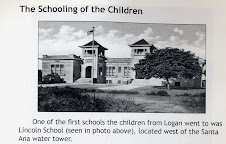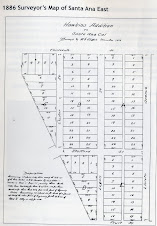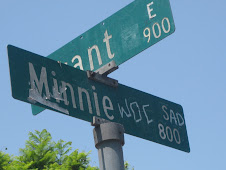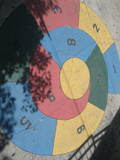With a little help from their friends
Victoria, the community advocate from Minnie Street, told us she’s particularly bothered by the misconception outsiders have about residents of these troubled neighborhoo
 ds. “[They] think we liked living in such environments, because we didn’t do anything about it,” she said. What outsiders often fail to consider is the money, energy, cooperation and time it takes for a community to reclaim its neighborhood. Victoria addresses this misconception by showing outsiders, and anyone interested, what a community like Minnie can accomplish with education, adequate resources and consistent government support.
ds. “[They] think we liked living in such environments, because we didn’t do anything about it,” she said. What outsiders often fail to consider is the money, energy, cooperation and time it takes for a community to reclaim its neighborhood. Victoria addresses this misconception by showing outsiders, and anyone interested, what a community like Minnie can accomplish with education, adequate resources and consistent government support.Put away the wrecking ball
As outsiders looking in, we were fortunate to be able to see Minnie and Logan through the eyes of residents who love their neighborhoods. With their help, we could see how much these communities have accomplished. Their gang troubles have minimized, and drugs and violence are being controlled by cooperation between residents and police. In Logan, children can now play in the park and recreation center.
 Even the pot-holed streets are being repaired. We were outsiders still, yet we began to see their neighborhood – their home – in a new light and with a new sensitivity to the diversity of perspectives that come into play when a community defines a place as “home.” If outsiders could appreciate Logan and Minnie as we now could, they might not be so quick to call in the wrecking ball.
Even the pot-holed streets are being repaired. We were outsiders still, yet we began to see their neighborhood – their home – in a new light and with a new sensitivity to the diversity of perspectives that come into play when a community defines a place as “home.” If outsiders could appreciate Logan and Minnie as we now could, they might not be so quick to call in the wrecking ball.Win-win potential
The Logan neighborhood continues to represent great potential for community developm
 ent because of upgrades already done in surrounding areas. Investments like the Santiago Lofts reflect the faith of city officials and developers alike in the future of Santa Ana. While these high-end lofts are targeted to draw more affluent artists and small business owners to the area, it’s encouraging to see the newly constructed low-income homes being built by the non-profit organization Taller San Jose peppered throughout the Logan neighborhood. They r
ent because of upgrades already done in surrounding areas. Investments like the Santiago Lofts reflect the faith of city officials and developers alike in the future of Santa Ana. While these high-end lofts are targeted to draw more affluent artists and small business owners to the area, it’s encouraging to see the newly constructed low-income homes being built by the non-profit organization Taller San Jose peppered throughout the Logan neighborhood. They r epresent new opportunities for home ownership that otherwise would be closed to so many Logan residents.
epresent new opportunities for home ownership that otherwise would be closed to so many Logan residents.Calling a time-out
The challen
 ges inherent in trying to integrate the new while preserving the old are likely to plague everyone with a stake in the future of Santa Ana. As the downtown “Artists Village” demonstrates, outsiders are drawn to urban development projects – especially when developers get the trendy factor right. In the
ges inherent in trying to integrate the new while preserving the old are likely to plague everyone with a stake in the future of Santa Ana. As the downtown “Artists Village” demonstrates, outsiders are drawn to urban development projects – especially when developers get the trendy factor right. In the midst of America’s Great Recession, loft homes in and around the Logan area of Santa Ana currently stand vacant.
midst of America’s Great Recession, loft homes in and around the Logan area of Santa Ana currently stand vacant.The real estate party is over, and those who still have money to spend are snapping up bargains at the beach and other formerly high-end communities. For the time being, at least, there won’t be a run on Logan lofts. But economies move in cycles, and this ebb will give way to a new flow eventually. When it does, would-be homeowners on the fringe will once again turn their attention to Santa Ana. The problem is, those outside buyers won’t be looking to embrace the reality of Logan’s rich cultural heritage and close-knit, resilient community. Outside buyers won’t be waging bidding wars on a turn-of-the-century Arts and Crafts fixer with original plumbing and a view of the tow truck yard. The new market will demand a genuine, sanitized reinterpretation of the historic Logan Barrio – complete with central air and elevators that play mariachi muzak 24/7. Oh, and would you please do something about the riffraff?
McCondo, anyone?
Middle-class homebuyers on a mission can sometimes come across like the stereotypical “Ugly Americans” abroad. They’re the folks who really don’t go to centuries-old villages for the culture and history. Rather, they do their best to make everything in their paths look and feel more American. Of course, not all American travelers are “ugly,” and not all Orange County homebuyers want to raze Logan Street to make room for McCondos. But a pragmatist might say, enough of them do. The current residents of Logan can
 enjoy a reprieve while the economy recovers. And if they use this time wisely, they may even gain some interim concessions that can help protect their beloved barrio when the tides change -- because change they will. It’s inevitable. He who has the money plans the community.
enjoy a reprieve while the economy recovers. And if they use this time wisely, they may even gain some interim concessions that can help protect their beloved barrio when the tides change -- because change they will. It’s inevitable. He who has the money plans the community.
















